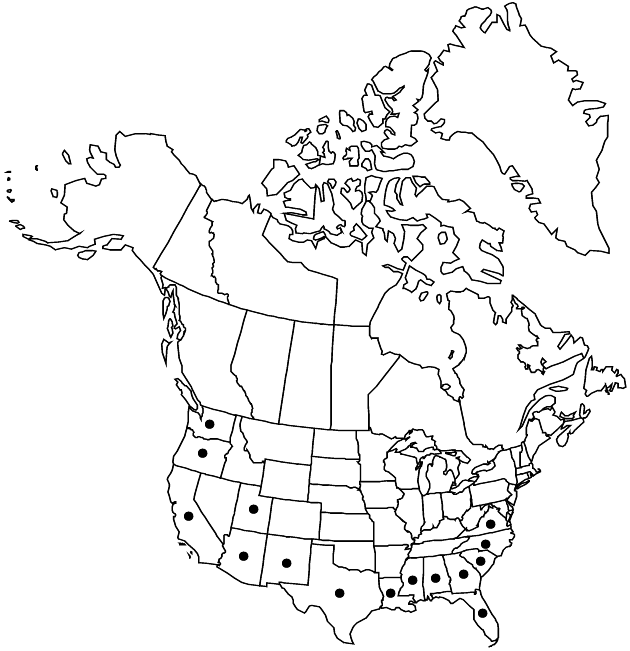Conyza bonariensis
Bull. Torrey Bot. Club 70: 632. 1943.
Plants erect, 10–100 (–150+) cm, branched mostly distally. Leaves: faces ± densely strigose or hispidulous; proximal blades oblanceolate, 30–80 (–120+) × 10–25+ mm, obscurely lobed to coarsely toothed or entire; distal narrowly oblanceolate to linear, 10–50 × 2–10 mm, obscurely toothed or entire. Heads usually in paniculiform to racemiform, rarely corymbiform arrays. Involucres 3.5–5 mm. Phyllaries usually strigose or hispidulous; outer greenish to purplish, lanceolate, shorter; inner stramineous to purplish, linear-attenuate (more chartaceous to scarious, less hairy). Receptacles 3–5 mm diam. in fruit. Pistillate florets 60–150+; corollas ± equaling or surpassing styles, laminae 0 or to 0.3 mm. Disc-florets 8–12+. Cypselae pale tan, 1–1.5 mm, faces glabrous or sparsely strigillose; pappi of 15–25+, pinkish, sordid, or tawny bristles 3–4+ mm. 2n = 54.
Phenology: Flowering year round, mostly late summer–fall.
Habitat: Disturbed sites, along roads and streets
Elevation: 0–500 m
Distribution

Introduced; Ala., Ariz., Calif., Fla., Ga., La., Miss., N.Mex., N.C., Oreg., S.C., Tex., Utah, Va., South America
Discussion
Conyza bonariensis is widespread in tropical and warm-temperate regions of the world. It is thought to be native to South America.
Selected References
None.